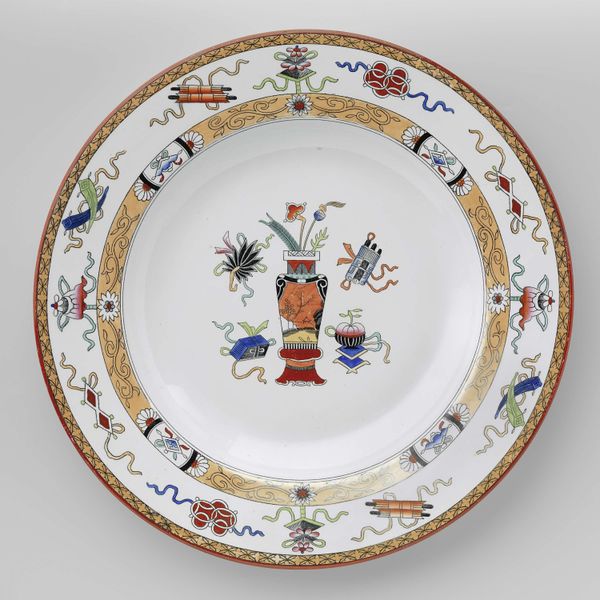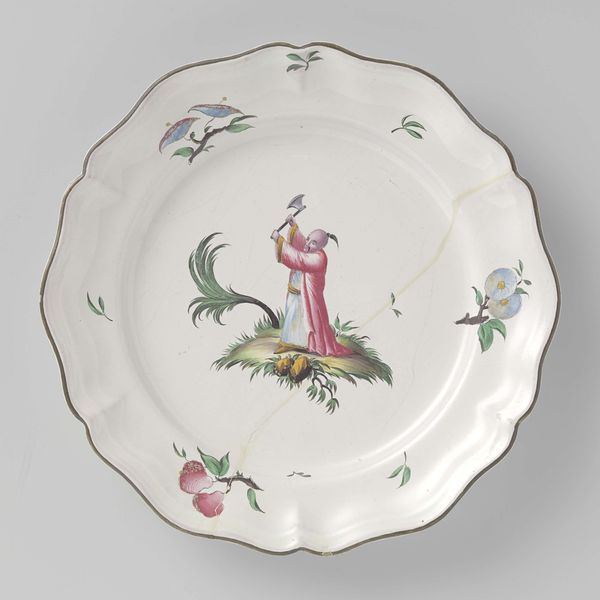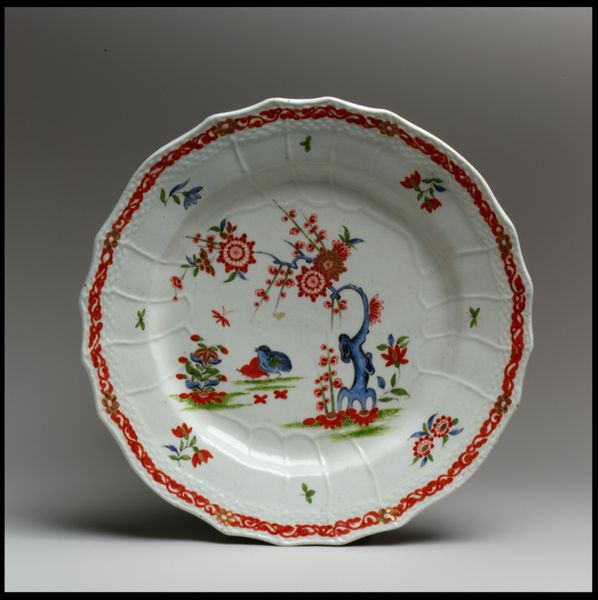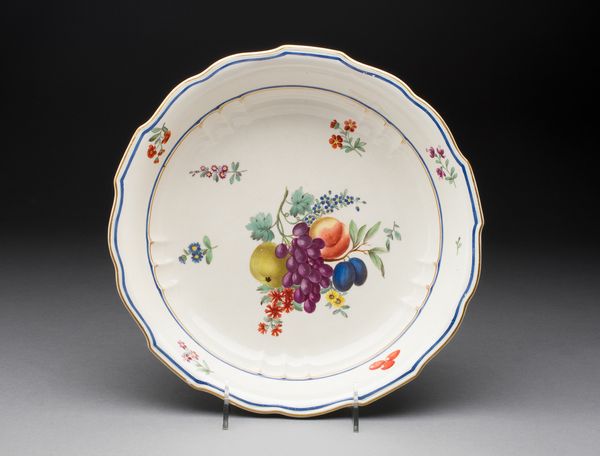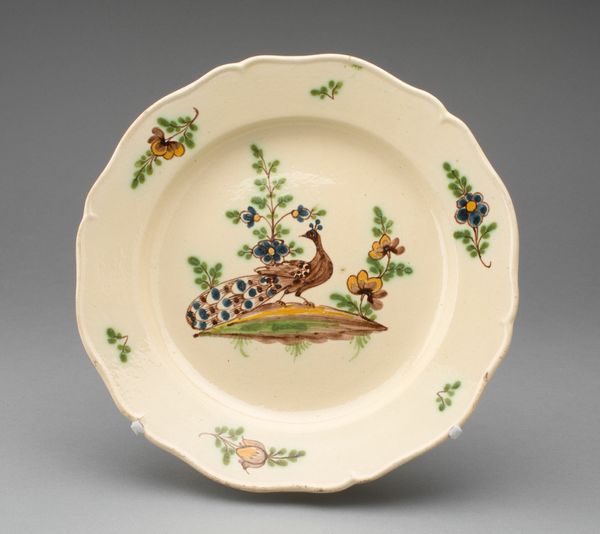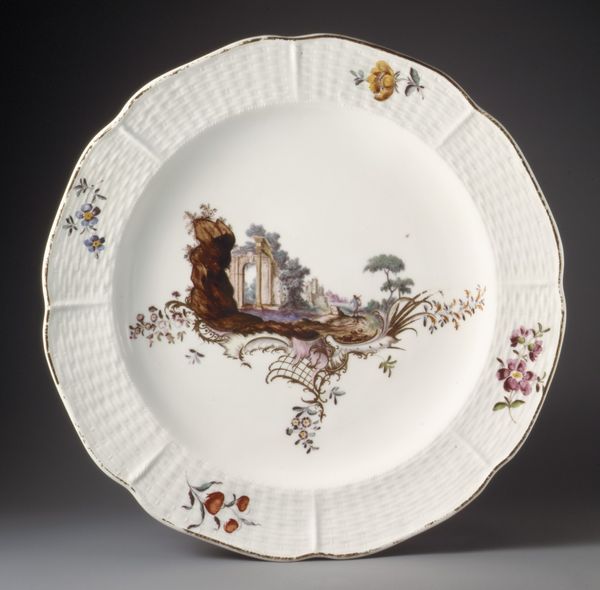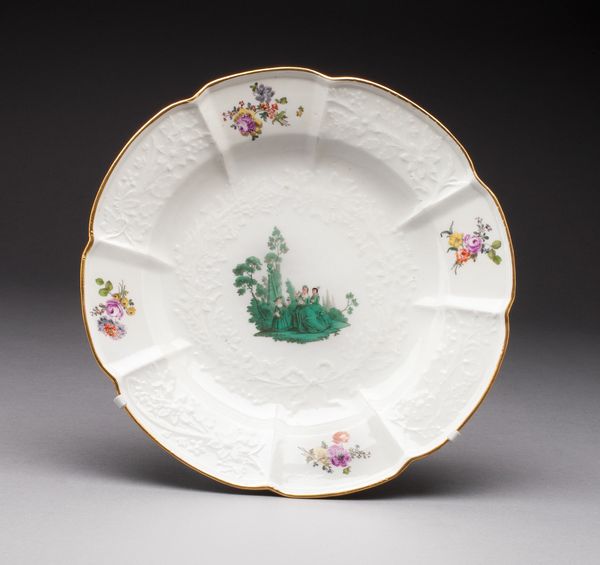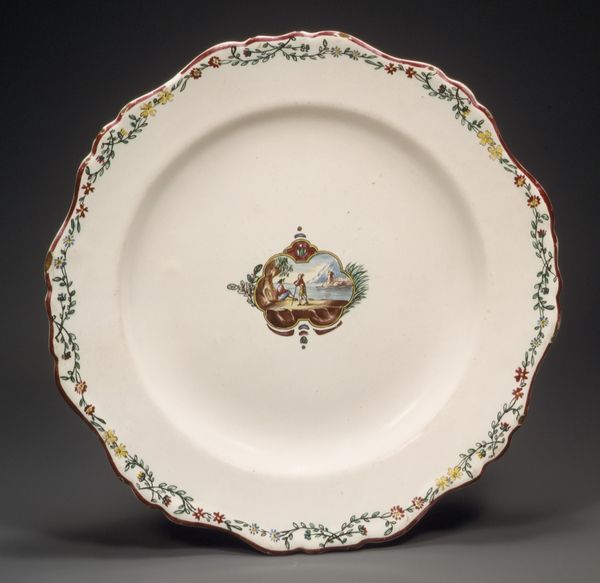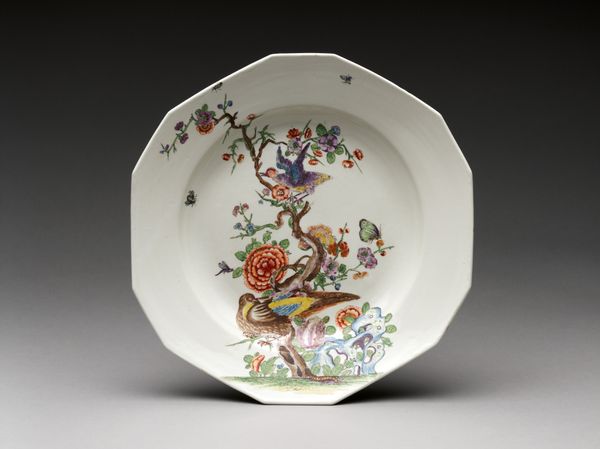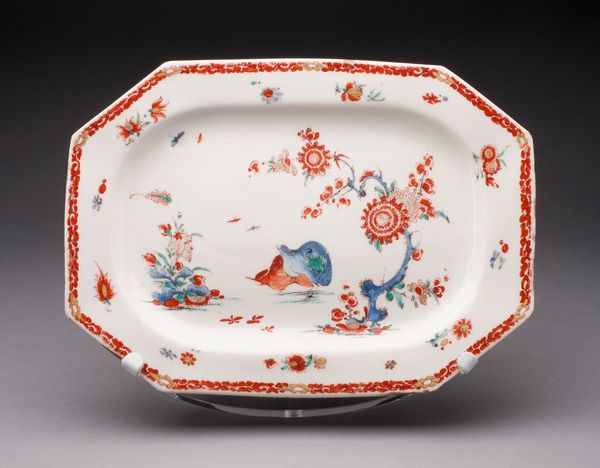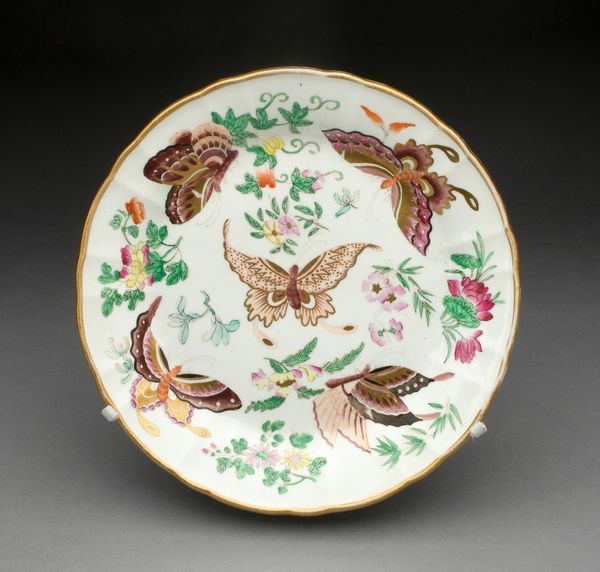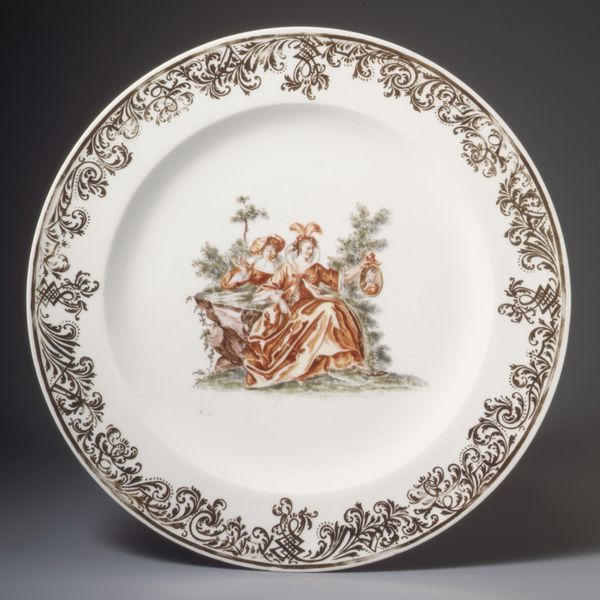
ceramic, earthenware, enamel
#
landscape
#
ceramic
#
figuration
#
earthenware
#
enamel
#
genre-painting
#
miniature
#
rococo
Dimensions: 1 1/8 x 9 3/4 x 9 3/4 in. (2.86 x 24.77 x 24.77 cm)
Copyright: Public Domain
Editor: Here we have a delightful plate, dating back to somewhere between 1760 and 1780, crafted by Joseph A. Hannong. It’s made of earthenware with enamel, featuring a painted scene. It almost feels like holding a tiny world in my hands! What strikes me most is its blend of artistry and utility. What's your take on this piece? Curator: I see a fascinating intersection of labor and consumption. Consider the process: mined clay, shaped by a potter, fired in a kiln – all labor. Then enamel added and fired again to create a landscape meant to represent everyday life. Look closely at how the central image, this small figure with the crutch, and the insects are rendered, contrasting with the mass produced decorative floral patterns around the edge. Do you see any implications of its mass production process? Editor: Now that you mention it, I see what you mean. Those individual scenes of working people at center—was there an aspiration to elevate common labor, or was it simply a fashionable decoration for the rising middle class to display their own material success? Curator: It's a tension, isn't it? Rococo, despite its reputation for frivolity, engaged with contemporary society. These pieces, made using advanced ceramic and firing techniques of the time, democratized images once confined to the aristocracy. And how accessible did this process render art objects, would you say? Editor: Fair point! By using more common materials, in combination with refined styles, art became somewhat more obtainable to those of the bourgeois. The very existence of these pieces reflects evolving economic landscapes and class mobility through materials and manufacturing processes! Curator: Precisely. Understanding how the means of production influenced the artwork, and, more broadly, how social stratification allowed access, unlocks new readings of these beautiful, yet often overlooked, everyday objects. Editor: It’s amazing how delving into the materiality and manufacturing can reveal such broader social narratives embedded within what appears, at first glance, to be merely decorative art. Curator: Indeed. And I encourage all art lovers to start viewing the material and processes as story telling. It is very helpful!
Comments
No comments
Be the first to comment and join the conversation on the ultimate creative platform.
